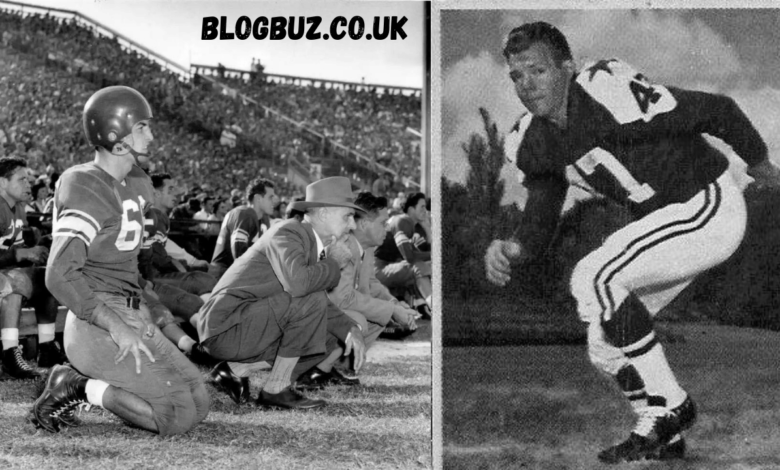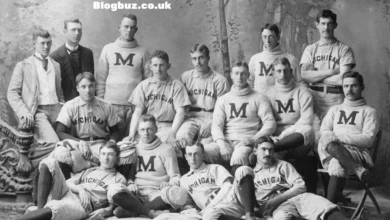The Impact of Dickey Maegels Interview 1979: A Landmark in Sports Journalism

The year 1979 was a pivotal moment in sports journalism, thanks to the revealing and heartfelt interview of Dickey Maegels. A celebrated athlete known for his achievements in both baseball and football, Maegels’ interview offered an unprecedented glimpse into the life of a sports legend. This article delves into the significance of the Dickey Maegels Interview 1979, exploring its impact on sports journalism, mental health awareness in athletics, and Maegels’ enduring legacy.
Setting the Stage: The Media Landscape of 1979
In 1979, the media landscape was dominated by television and radio, with print media still playing a crucial role. Major networks shaped public discourse, while tabloid journalism began to rise, fueling sensational stories about celebrities and athletes. This environment was ripe for a groundbreaking interview that would capture public attention and set new standards for authenticity and depth in sports journalism.
The Man Behind the Legend
Dickey Maegels first rose to prominence with his remarkable performance in the 1954 Cotton Bowl game, where he was infamously tackled by an opposing player, creating an unforgettable moment in college football history. Beyond football, Maegels had a successful career in Major League Baseball, playing as a third baseman for teams such as the Baltimore Orioles, Philadelphia Phillies, and Chicago White Sox. His athletic prowess and determination earned him admiration from fans and peers alike.
The Interview: A Window into Maegels’ World
The 1979 interview, conducted by Ruby Reid, provided a rare and intimate look into Maegels’ life. The relaxed, conversational style allowed Maegels to candidly discuss the defining moments of his career and the personal challenges he faced along the way. Key topics included:
Career Highlights and Challenges
Maegels recounted his early days in sports, the highs and lows of his career, including the infamous Cotton Bowl incident and the “Fan Tackle” during the 1954 All-Star Game. He also discussed his transition from athlete to businessman, reflecting on the struggles and rewards of this significant life change.
Mental Health and Injuries
One of the most impactful aspects of the interview was Maegels’ openness about his struggles with mental health and injuries. He revealed how persistent knee and ankle injuries plagued his career, often confining him to a whirlpool instead of the practice field. Maegels’ willingness to discuss these issues broke down stigmas and sparked meaningful conversations about mental health in athletics.
Personal Reflections
Maegels’ reflections on his life beyond sports, including his period of self-discovery and eventual success in real estate and business, added depth to the interview. His honesty and vulnerability resonated with audiences, offering a powerful message about resilience and determination.
The Interview’s Impact on Sports Journalism
The Dickey Maegels Interview 1979 set a new standard for sports journalism. Its in-depth and candid approach influenced how future interviews were conducted, emphasizing the importance of authenticity and meaningful storytelling. Journalists began to pursue a level of depth and honesty similar to that seen in Maegels’ interview, shaping the landscape of sports media for years to come.
Raising Awareness About Mental Health
One of the most significant impacts of the interview was its role in raising awareness about mental health issues in athletics. Maegels’ candid discussion of his struggles with injuries and mental health helped to break down stigmas and encouraged other athletes to share their stories. This openness fostered a culture of acceptance and support within the sports community, highlighting the importance of mental well-being alongside physical health.
Legacy and Long-Term Influence
Decades after airing, the Dickey Maegels Interview 1979 resonates with audiences. It remains a testament to the power of authenticity and honesty in sports journalism, inspiring future generations of athletes and journalists alike. Maegels’ legacy as a trailblazer in open dialogue about mental health endures, reminding us of the importance of compassion and empathy in sports and beyond.
Conclusion
The Dickey Maegels Interview 1979 is more than just a significant moment in sports journalism; it is a powerful narrative of resilience, authenticity, and the human spirit. Maegels’ willingness to share his triumphs and struggles set a new standard for interviews and paved the way for greater mental health awareness in athletics. As we reflect on his legacy, we honor his achievements on the field and his courage in sharing his story with the world. The impact of this interview continues to inspire and resonate, making it a timeless artifact in the history of sports journalism.
Frequently Asked Questions (FAQs) about the Dickey Maegels Interview 1979
Who is Dickey Maegels?
Dickey Maegels was a renowned athlete known for his achievements in both football and baseball. He gained fame for his performance in the 1954 Cotton Bowl and successful career in Major League Baseball.
What is significant about the 1979 interview with Dickey Maegels?
The 1979 interview with Dickey Maegels is significant for its candid and heartfelt nature. Maegels openly discussed his career highlights, personal struggles, and mental health, setting a new standard for authenticity in sports journalism.
Who conducted the 1979 interview with Dickey Maegels?
Ruby Reid, a prominent journalist known for her in-depth and thoughtful approach, conducted the interview.
What topics did Dickey Maegels cover in the interview?
Maegels discussed his career milestones, including the infamous 1954 Cotton Bowl incident, his struggles with injuries, mental health challenges, and his transition from sports to business.
Where can I watch or read the full 1979 interview with Dickey Maegels?
The full interview can be accessed through various sports history archives and may be available on platforms specializing in historical sports journalism content.
You May Also Read: Unlocking Athletic Potential: The Power of Sports Harmonicode




